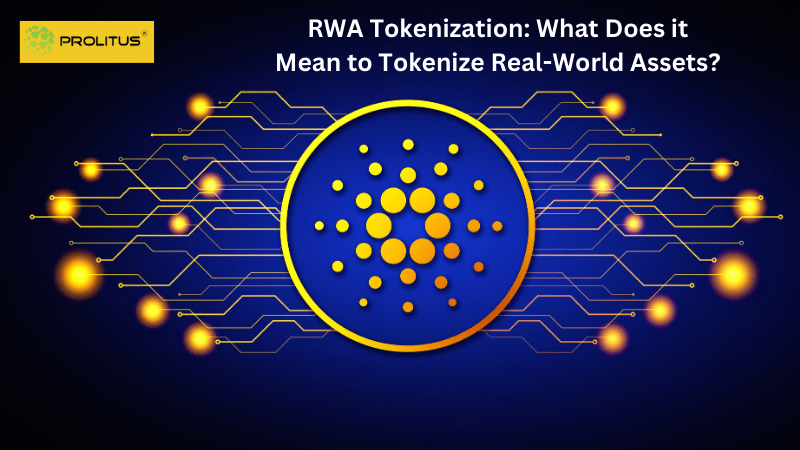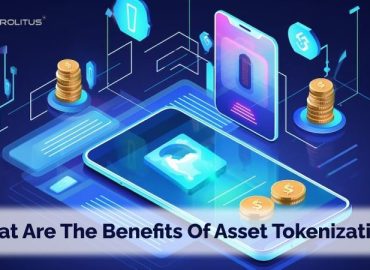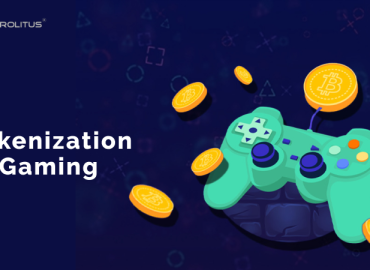Imagine you’re passionate about owning an Andy Warhol masterpiece, but the thought of dishing out astronomical amounts, like $195 million for a Marilyn painting or even $850,000 for a print of Queen Elizabeth, feels far out of reach. Many art enthusiasts share this desire, both for personal enjoyment and investment potential, yet high prices often deter them. But what if there was a way to own a piece of such art without breaking the bank? This is where the innovative concept of real world assets comes into play.
In a real-life scenario, a company named Freeport made owning a share of an Andy Warhol painting accessible to the public. They created 1,000 tokens, each representing a fraction of the artwork, making it possible for anyone to invest in art. As of now, you can become a proud owner of 1/1000th of Warhol’s “Rebel Without a Cause” for just under $200.
Asset tokenization is not confined to the world of art; it extends to various assets such as bonds, cars, gold, houses, and more. This progressive concept is rapidly gaining traction, attracting the attention of traditional financial institutions and investors alike.
What is Tokenizing Real-World Assets
Tokenizing real-world assets involves converting physical assets, such as real estate, art, or commodities, into digital tokens on a blockchain. These tokens represent ownership or a share in the asset and can be bought, sold, or traded. This process enhances liquidity, accessibility, and efficiency in traditionally illiquid markets.
The central concept behind real-world asset tokenization is to digitize investments on the blockchain, connecting them to physical assets like real estate, precious metals, art, and collectibles. Rather than relying on physical deeds, ownership is securely recorded on the blockchain. This ownership can be easily traded between individuals or divided into fractions for broader accessibility.
The benefits of maintaining ownership records on the blockchain are numerous:
Cost Reduction: By eliminating intermediaries like lawyers, brokers, and banks, tokenization significantly lowers transaction costs.
24/7 Trading: Unlike traditional markets with limited trading hours, blockchain-based assets can be bought and sold around the clock, offering a new level of efficiency.
Lower Entry Barriers: Tokenization opens up investment opportunities to a wider audience, increasing market liquidity and democratizing access.
Enhanced Transparency: The blockchain’s transparent nature fosters trust and accountability among traders, providing a clear and traceable history of ownership.
To illustrate this with the example of a Warhol painting, if 1,000 people own shares of the artwork, they can easily speculate and trade these shares without the need for coordination. Instead of engaging multiple intermediaries like galleries, appraisers, lawyers, and banks, each charging fees or commissions, buyers and sellers can directly exchange assets, incurring only minimal gas fees for swift and secure transfers.
It’s worth noting that asset tokenization extends beyond high-value items like vintage cars, real estate, and gold. It also encompasses a wide array of assets, including U.S. Treasuries, currency, and stocks. This inclusive approach is reshaping the world of finance and investment, making it more accessible and efficient for everyone.
Investing in the Digital Age: Tokenization of Assets
In today’s digital landscape, the world of investments has evolved, offering unique opportunities for individuals to own a piece of valuable assets. Asset tokenization has made it possible to buy fractional shares of various assets, including artworks, gemstones, real estate, gold, and company stocks. Let’s explore these exciting possibilities and learn about real-world examples of asset tokenization projects.
- Art
Imagine owning a fraction of a masterpiece by renowned artists like Picasso, Monet, or Van Gogh. Through asset tokenization, you can invest in valuable artworks and become a part-owner.
- Diamonds
Gemstone enthusiasts can now own a share of rare and exquisite diamonds. This innovative approach allows you to invest in the world of gemstones, previously reserved for the elite.
- Real Estate
Investing in real estate has never been easier. Asset tokenization enables you to own a portion of buildings, land, or properties, opening up a world of opportunities in the real estate market.
- Gold
Gold, a symbol of wealth and luxury, is now accessible to more people. You can invest in this precious metal and own a piece of it, traditionally used as currency and jewelry.
- Stocks
You can buy stakes in companies that produce products or services, making it possible to participate in the stock market even with limited resources.
Real-World Examples of Asset Tokenization
Here are some noteworthy projects that have brought asset tokenization to life:
RealT:
RealT allows investors to purchase fractional ownership in real estate properties using cryptocurrency. On the Realt.co website, you can buy and sell tokens representing real estate properties from around the world, including apartments, houses, and offices. Furthermore, you can earn rental income from your tokens each month.
Harbor:
Harbor empowers investors to buy shares in private companies through blockchain technology, expanding the investment landscape to include private enterprises.
Hamilton Lane:
Hamilton Lane collaborates with Securitize to provide access to private business investments. They’ve created tokens representing some of their funds, offering a more accessible and cost-effective way to invest in private businesses.
Project Guardian:
The Monetary Authority of Singapore (MAS), in partnership with JPMorgan, DBS Bank, and Marketnode, has tokenized bonds and deposits. These tokens can be used for various online financial activities, such as lending, borrowing, and earning interest.
Asset tokenization is transforming the world of investments, making it more inclusive and diverse. Whether you’re interested in fine art, gemstones, real estate, precious metals, or company stocks, there are exciting opportunities awaiting you in this digital age of investment.
How do real-world assets play a role in decentralized finance (DeFi)
In recent years, the DeFi (Decentralized Finance) market has witnessed a surge in protocols integrating with traditional credit markets, including equity and debt financing. This trend holds immense market potential, given that credit plays a pivotal role in fueling trillions of dollars’ worth of business activities and drives a significant portion of the global economy.
In fact, the blockchain is poised to disrupt over $800 trillion in traditional markets. The bridge connecting decentralized finance with traditional finance is the process of tokenizing real-world assets.
When real-world assets are brought onto the blockchain and integrated into the DeFi ecosystem, it opens up exciting opportunities for collateral and investment, enhancing market efficiency, and providing access to liquidity that goes beyond what traditional markets can offer.
The tokenization of real-world assets empowers businesses to harness the DeFi ecosystem for capital, offering reduced barriers to entry and new, cost-effective financing options, particularly beneficial for emerging markets.
At the same time, the DeFi ecosystem gains fresh avenues for investment yield, access to diverse off-chain markets, and the expansion of customer bases into traditional finance circles.
In essence, blockchain technology introduces trust, liquidity, transparency, security, efficiency, and innovation into the mix, making the tokenization of real-world assets a valuable proposition for all participants involved. Whether you’re a business looking for financing or an investor seeking new opportunities, the integration of real-world assets into DeFi is a win-win situation.
What is the incredible process of tokenization?
Imagine a breathtaking painting, and the artist’s desire to share it with the world while earning funds to create more art. To achieve this, the artist must collaborate with a platform capable of creating digital tokens to authenticate and establish the painting’s value.
Once the painting is verified, the platform generates digital tokens representing fractional ownership of the artwork. Think of it as dividing the painting into distinct digital badges – these badges are the tokens!
Here’s a step-by-step guide to how this process works:
Choose Your Valuable Asset: Begin with a valuable asset that you wish to tokenize. It could be anything of worth, such as a painting, a precious gem, or a real estate tokenization services property.
Leverage Blockchain Technology: Utilize a blockchain, a secure and transparent digital ledger that records all online activities. Its security features ensure that no tampering or manipulation occurs.
Create Your Token: Create a digital token on the blockchain. Think of it as a digital certificate that proves your ownership stake in the real-world asset. You have the flexibility to decide how many tokens to issue and the value of each token.
Link Token to Asset: Establish the connection between the token and the real-world asset by using a smart contract. A smart contract acts as a set of rules that dictates how the blockchain should manage the token and the asset. For instance, it can automate ownership transfers when someone purchases a token.
Buy, Sell, or Trade Tokens: You can buy, sell, or trade these tokens on the internet. Various platforms facilitate these transactions, connecting buyers and sellers. Additionally, you can swap tokens with others who hold tokens representing different assets.
In this way, artists and asset owners can share their valuable creations and receive support from a global community. The blockchain and digital tokens make it secure, transparent, and accessible for everyone.
Challenges of Real World Assets:
In the exciting world of real-world asset tokenization, several challenges need to be addressed for a successful and compliant digital adventure. Let’s dive into these obstacles and how we can overcome them.
-
Regulatory Compliance
Navigating the Legal Maze: Just like superheroes adhere to rules to maintain order, real-world asset tokenization encounters regulatory hurdles that vary from one country to another and across different asset types. Complying with all relevant laws and regulations can be complex, but it’s essential for a seamless digital journey.
-
Trust and Collaboration
Relying on Trusted Allies: Much like superheroes rely on trustworthy allies, tokenization platforms, blockchain networks, and custodian services must work together seamlessly, forming a united front to ensure the safety and fairness of the process.
-
Technological Advancements
Striving for Technological Perfection: Even the most formidable superheroes face challenges, and in the world of tokenization, technical issues must be conquered. This includes ensuring the scalability of the system to accommodate everyone, enabling different systems to communicate effectively, and simplifying access for all to partake in the digital adventure.
-
Education and Awareness
Empowering Users: Tokenization should be accessible and comprehensible to asset owners and investors. Increased awareness and understanding can help individuals grasp the benefits and risks associated with tokenization and provide guidance on how to navigate this exciting digital realm.
What’s Next for RWA Tokenization
Conventional financial institutions are showing keen interest in the concept of asset tokenization, particularly for assets they already trade, such as gold, stocks, and commodities. In 2021, investment fund giant Franklin Templeton introduced the Franklin On Chain U.S. Government Money Fund on the Stellar blockchain and expanded to Polygon in 2023. Notably, this fund stands as the first U.S. registered mutual fund utilizing a public blockchain for transaction processing and share ownership recording.
The Bank of America has recently emphasized the pivotal role of tokenizing real-world assets (RWAs) in driving the adoption of digital assets. Their report reveals that the market for tokenized gold has already attracted over $1 billion in investments. Furthermore, there is a rising demand for tokenized U.S. Treasury bonds, with the collective market capitalization of tokenized money market funds approaching $500 million, as per data compiled by CoinDesk.
The outlook for asset tokenization is promising, with the global business advisory firm Boston Consulting Group predicting a substantial growth trajectory. They forecast that the tokenized asset market could expand to a staggering $16 trillion by the year 2030. This promising future underscores the growing significance of tokenization in the financial landscape.
Final Thoughts
In summary, real-world asset tokenization represents an innovative method for investing in high-value assets while minimizing financial risks. Tokenization stands as a revolutionary technology that has the potential to redefine how we own and invest in tangible assets. It enhances accessibility, affordability, and efficiency for everyone, opening up fresh opportunities and advantages for token users. The future of asset ownership is undoubtedly intertwined with tokenization.
Real World Asset Tokenization embarks on a captivating journey into the realm of digital ownership. It magically transforms tangible assets into digital assets, thereby extending their accessibility to a broader audience while empowering asset holders. Leveraging blockchain technology as its driving force, it introduces a more efficient and secure approach to asset management. While it offers numerous benefits, it’s important to be aware of the challenges it presents, such as regulatory compliance and the need for standardization.
Secure Your Real Estate Investment with Prolitus Tokenization Services
Unlock the potential of your real estate investments with Prolitus Tokenization Services, the industry’s leading real estate tokenization platform. We offer a comprehensive solution for the Tokenization of Real-World Assets, allowing you to fractionalize and digitize your property holdings.
Our platform, considered the Best Real Estate Tokenization Platform, provides a secure and transparent way to invest in real estate. By breaking down property ownership into tokens, investors can access previously inaccessible markets. This means increased liquidity, reduced barriers to entry, and an opportunity to diversify your real estate portfolio like never before.
With our state-of-the-art RWAs Tokenization Platform Development Company, you can trust Prolitus to help you navigate the world of real estate investment with confidence. Explore the future of real estate tokenization with Prolitus Tokenization Services and maximize your investment potential.





